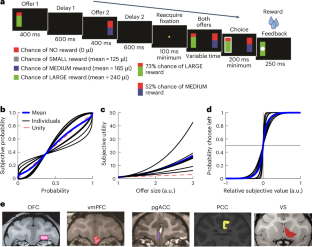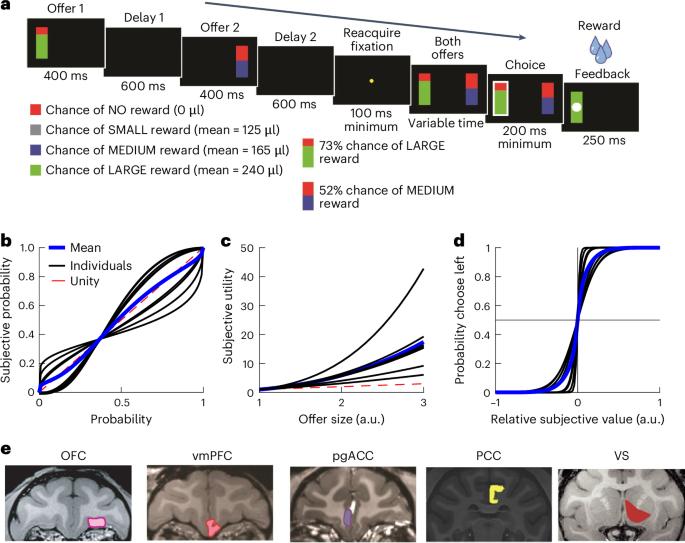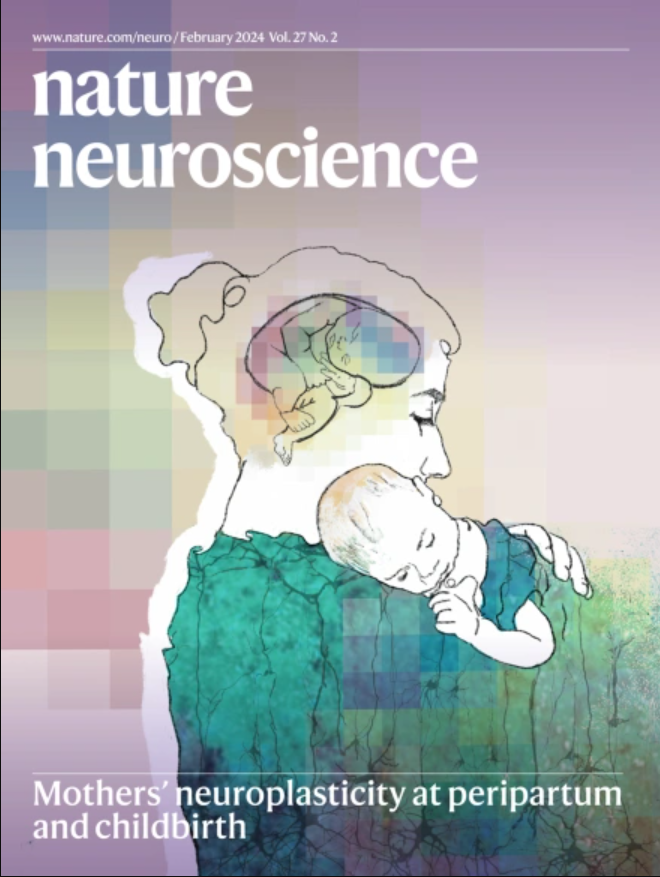价值的半正交子空间介导约束与泛化之间的权衡
IF 20
1区 医学
Q1 NEUROSCIENCES
引用次数: 0
摘要
在选项之间做出选择时,我们必须将它们的价值与选择这些选项所需的行动联系起来。我们假设大脑是通过神经群子空间来解决这一关联问题的。在这里,我们在猕猴执行选择任务时发现,五个奖赏敏感区域的神经群会在不同的子空间中对左右两侧出现的提议值进行编码。这种编码足以在保留抽象价值信息的同时将要约价值与其位置联系起来。要约呈现后,所有区域都会在正交子空间中对第一个和第二个要约的价值进行编码;这种正交化也能实现绑定。我们的子空间绑定假设提出了两个新的预测,并得到了数据的证实。首先,行为错误应该与空间神经错误绑定相关,而不是与时间神经错误绑定相关。其次,与中等价值相比,当提议的价值较低或较高时,即使控制了价值差异,行为错误也会增加。这些结果共同支持了大脑使用半正交子空间来绑定特征的观点。本文章由计算机程序翻译,如有差异,请以英文原文为准。


Semi-orthogonal subspaces for value mediate a binding and generalization trade-off
When choosing between options, we must associate their values with the actions needed to select them. We hypothesize that the brain solves this binding problem through neural population subspaces. Here, in macaques performing a choice task, we show that neural populations in five reward-sensitive regions encode the values of offers presented on the left and right in distinct subspaces. This encoding is sufficient to bind offer values to their locations while preserving abstract value information. After offer presentation, all areas encode the value of the first and second offers in orthogonal subspaces; this orthogonalization also affords binding. Our binding-by-subspace hypothesis makes two new predictions confirmed by the data. First, behavioral errors should correlate with spatial, but not temporal, neural misbinding. Second, behavioral errors should increase when offers have low or high values, compared to medium values, even when controlling for value difference. Together, these results support the idea that the brain uses semi-orthogonal subspaces to bind features. This study shows that the brain can link action to value through neural population subspaces, balancing reliable binding of action to value and generalization to novel stimuli.
求助全文
通过发布文献求助,成功后即可免费获取论文全文。
去求助
来源期刊

Nature neuroscience
医学-神经科学
CiteScore
38.60
自引率
1.20%
发文量
212
审稿时长
1 months
期刊介绍:
Nature Neuroscience, a multidisciplinary journal, publishes papers of the utmost quality and significance across all realms of neuroscience. The editors welcome contributions spanning molecular, cellular, systems, and cognitive neuroscience, along with psychophysics, computational modeling, and nervous system disorders. While no area is off-limits, studies offering fundamental insights into nervous system function receive priority.
The journal offers high visibility to both readers and authors, fostering interdisciplinary communication and accessibility to a broad audience. It maintains high standards of copy editing and production, rigorous peer review, rapid publication, and operates independently from academic societies and other vested interests.
In addition to primary research, Nature Neuroscience features news and views, reviews, editorials, commentaries, perspectives, book reviews, and correspondence, aiming to serve as the voice of the global neuroscience community.
 求助内容:
求助内容: 应助结果提醒方式:
应助结果提醒方式:


